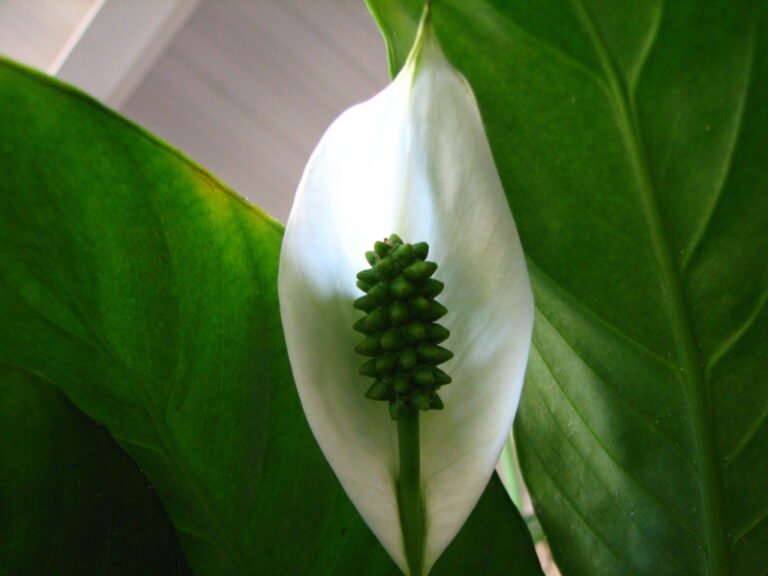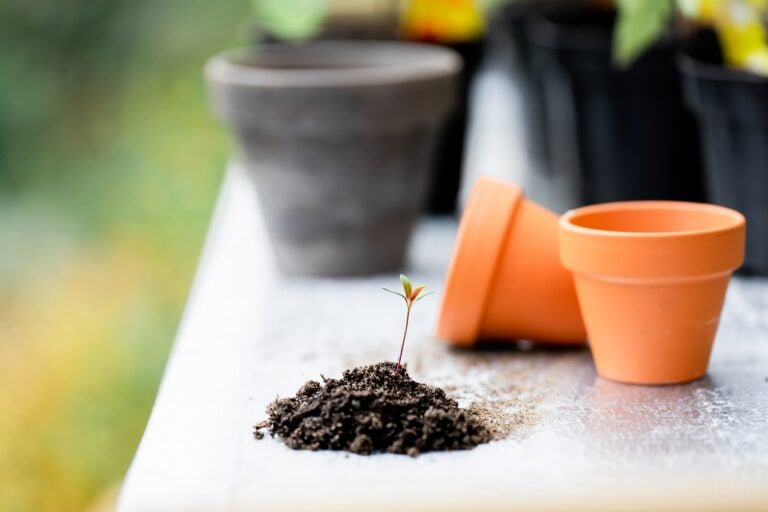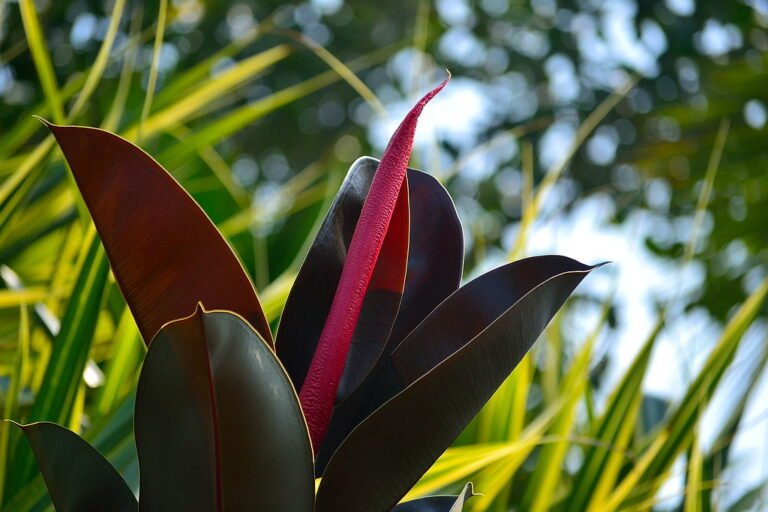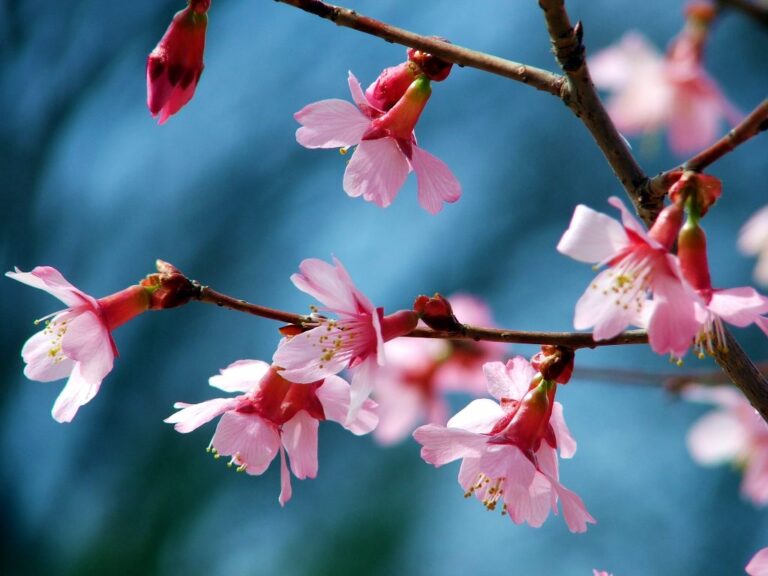Understanding Weeping Evergreen Trees: Types, Care, and Characteristics
Weeping evergreen trees, like Weeping Norway spruce and Weeping white pines, grow elegantly with their drooping branches, crafted by grafting unique branches onto root stocks for a graceful garden appeal. Ensuring full sun exposure and regular pruning is important to maintain their beauty and height. Deep and consistent watering, proper soil drainage, and careful pruning in late winter are essential care steps. Tools like hand pruners and loppers aid in maintenance. These trees may face issues like root rot and pests. Understanding their characteristics and care needs is critical for their health and growth. More insights on ideal care await.
Weeping Evergreen Tree Characteristics
Weeping evergreen trees, characterized by their graceful and cascading branches, are formed by grafting mutant branches onto root stocks to induce a downward growth habit. These trees offer a unique and elegant appearance in gardens, with their branches flowing downwards in a weeping fashion. The cascading branches of weeping evergreens make them excellent choices for creating visual interest and adding a touch of sophistication to landscapes.
To maintain the graceful appearance of weeping evergreens, it is vital to provide them with full sun exposure. Proper pruning is essential to make sure these trees retain their desired shape and height. When cared for correctly, weeping evergreens can serve as focal points in gardens, drawing the eye and creating a sense of depth and dimension. Additionally, these trees offer winter interest, as their evergreen foliage provides color and texture during the colder months.
Weeping evergreens come in various types, including Weeping Norway spruce, Weeping white pines, and Weeping Alaskan cedar. Each type offers its unique characteristics and growth habits, contributing to the diversity of options available for gardeners looking to incorporate weeping trees into their landscapes. Through strategic placement and thoughtful care, weeping evergreens can also be used to create visual screens, offering privacy and beauty to outdoor spaces.
Popular Weeping Evergreen Tree Types
Among the various types of weeping evergreen trees, each species offers distinct characteristics that cater to specific preferences and landscaping needs. Weeping Norway spruce, known for its hardiness and deer resistance, typically reaches heights of 4 to 15 feet. The Weeping white pines feature long, soft needles and usually stay under 15 feet tall, making them a popular choice for those seeking a more compact weeping evergreen. On the other hand, the Weeping Alaskan cedar can grow up to 20 feet, showcasing drooping branches that add a unique aesthetic to any garden.
These popular weeping evergreen trees can be shaped and trained using proper pruning techniques to maintain their desired form and size. Whether you prefer the dense foliage of the Weeping Norway spruce, the soft needles of the Weeping white pines, or the majestic stature of the Weeping Alaskan cedar, there is a weeping evergreen tree type to suit every landscaping vision. Consider the heights, needle textures, and growth habits of these varieties when selecting the perfect weeping evergreen for your outdoor space.
Essential Care Tips for Weeping Evergreens
I will address essential care tips for weeping evergreens, focusing on watering frequency and pruning techniques. Proper watering is vital for the health of weeping evergreens, ensuring they receive sufficient moisture without becoming waterlogged. Additionally, mastering the correct pruning techniques will help maintain the desired shape and size of these elegant trees.
Watering Frequency
Consistent and deep watering is indispensable for ensuring the proper hydration of the root system of weeping evergreen trees. Weeping evergreens require deep soakings once or twice a week, particularly during dry periods and in their initial growth phase. Overwatering should be avoided to prevent issues like root rot, so it’s essential to maintain consistent moisture levels without saturating the soil. Monitoring the soil moisture around the tree is crucial to adjust the watering frequency according to the tree’s needs for ideal growth. Factors such as soil composition, weather conditions, and the age of the tree can influence the frequency of watering. By providing adequate hydration through proper watering practices, we can promote the health and vigor of weeping evergreens.
Pruning Techniques
Pruning weeping evergreens is vital for maintaining their desired shape and size while promoting healthy growth and preventing branch overcrowding. Regular pruning helps improve air circulation and sunlight penetration, leading to overall tree health. It is best to prune in late winter or early spring before new growth emerges. When pruning, it is important to remove dead or damaged branches to encourage new growth. Sharp and clean tools should be used to make precise cuts and minimize stress on the tree. By following proper pruning techniques, we can make sure that our weeping evergreens thrive and continue to enrich the beauty of our landscapes.
Sunlight and Soil Requirements
For ideal growth and development, weeping evergreen trees flourish in full sun to partial shade and well-drained soil conditions. Sunlight is important for photosynthesis, a process essential for the tree’s energy production and overall health. Weeping evergreens require well-drained soil to prevent waterlogging, which can lead to root rot. The soil composition plays a critical role in providing adequate root aeration and nutrient uptake for these trees. Compacted soils should be avoided, as they hinder root development and nutrient absorption.
When planting weeping evergreens, it is crucial to take into account their sunlight requirements. Placing them in locations where they can receive full sun or partial shade will promote ideal growth. Care should be taken to make sure that the soil is well-drained to prevent water stagnation around the roots. Monitoring the moisture levels in the soil can help in maintaining the perfect conditions for these trees.
Understanding the sunlight and soil requirements is important for the successful care of weeping evergreen trees. By providing the right environment with adequate sunlight and well-drained soil, gardeners can help these trees thrive and improve the beauty of their landscape.
Pruning Weeping Evergreens
When pruning weeping evergreens, it is vital to follow proper techniques to maintain the tree’s shape and health. Timing is essential, and it is best to prune in late winter or early spring before new growth appears. Sharp, clean tools are necessary to make precise cuts and avoid causing harm to the tree.
Proper Pruning Techniques
When shaping drooping conifers through selective trimming, prioritize the removal of deceased or harmed branches to ensure the tree’s health and vitality. Pruning weeping evergreens involves carefully evaluating each branch for signs of disease or pest infestation. Thinning out crowded branches not only improves air circulation but also allows for better sunlight penetration within the canopy, promoting overall tree health. It is essential to avoid severe pruning on weeping evergreens to preserve their graceful cascading form. Regular inspection during pruning can help detect early signs of issues, preventing further spread. By following proper pruning techniques, such as removing dead or damaged branches and ensuring adequate spacing, we can maintain the health and beauty of these unique trees.
Timing for Pruning
During late winter to early spring, we should prune weeping evergreens to promote optimal growth and maintain their distinct form. Pruning during this period allows for the removal of dead, damaged, or crossing branches without causing excessive stress or sap loss to the tree. It is vital to avoid pruning during the growing season to prevent harming the tree and to guarantee its overall health. By selectively shaping the tree through precise cuts, we can help maintain its unique weeping form. To achieve this, always use sharp tools to make clean cuts, reducing the risk of disease transmission. Pruning at the right time with proper techniques is essential for the well-being and aesthetics of weeping evergreens.
Tools Needed for Pruning
To effectively prune weeping evergreens, essential tools include hand pruners, loppers, pruning saws, and protective gloves. When pruning these trees, using the right tool for the branch size is critical to maintain their health and aesthetics.
- Hand Pruners: Ideal for small branches up to 1 inch in diameter.
- Loppers: Suitable for branches up to 2 inches thick.
- Pruning Saws: Necessary for larger branches that loppers can’t handle.
- Gloves: Protect hands from scratches and sap while pruning weeping evergreens.
Selecting the correct tool ensures clean cuts, promoting proper healing and growth of the tree. Remember to wear gloves to shield your hands from potential injuries and sticky sap during the pruning process.
Watering Needs for Weeping Evergreens
Properly maintaining the watering schedule for weeping evergreen trees is essential for their overall health and resilience. Weeping evergreen trees, especially during their establishment phase, typically require regular watering to establish strong root systems and sustain their growth. It is vital to provide proper watering, as overwatering can lead to root rot due to excessive moisture, while underwatering can stress the trees, making them more susceptible to diseases and pests.
To guarantee the ideal moisture levels for weeping evergreens, mulching around the base of the trees can help retain soil moisture and reduce water evaporation. Watering deeply but infrequently is generally recommended for these trees to encourage deep root growth and drought tolerance. Checking the soil moisture regularly is crucial to adjust the watering frequency accordingly, considering factors like weather conditions and soil drainage.
Maintaining a balance in watering practices is vital to the overall health and vitality of weeping evergreen trees. By following proper watering techniques and monitoring soil moisture levels, we can support the resilience and longevity of these majestic trees in our landscapes.
Common Issues With Weeping Evergreen Trees
Weeping evergreen trees may encounter various common issues that can affect their health and appearance. Some of the most prevalent problems include:
- Root Rot: Planting weeping evergreens in poorly drained soil can lead to root rot, jeopardizing the tree’s ability to uptake nutrients and water.
- Spider Mites and Aphids: These pests are common culprits that can infest weeping evergreen trees, causing damage to the foliage and overall health of the tree.
- Overwatering: Excessive watering can result in fungal diseases like needle cast in weeping evergreen trees, appearing as discolored and unhealthy needles.
- Winter Burn: Drying winds and sun exposure during winter can lead to winter burn, causing foliage damage and browning in weeping evergreens.
- Improper Pruning: Incorrect pruning techniques can disrupt the natural weeping shape of evergreen trees, impacting their aesthetics and growth patterns.
To prevent these issues, maintain proper drainage, monitor and control pests, avoid overwatering, provide winter protection, and prune weeping evergreens correctly. Regular inspection and prompt action can help preserve the health and beauty of these unique trees.






